When mentioning giant creatures in the aquatic world, we often think of sea creatures such as sharks, dolphins or whales. However, even in freshwater rivers, you will be surprised by the enormous size of some fish species.
Video player is loading.
Current time 0:00
Duration 2:11
Time remaining 2:11
One of those amazing giants is the Arapaima, also known as the “freshwater monster” of the Amazon. Discovered by Swiss biologist Louis Agassiz in 1829, Arapaima (also known as “giant pirarucu” or “pirarucu”) is found in tropical South America and is considered one of the largest freshwater fish in the world.
Some individuals of this species can reach extraordinary sizes, weighing up to 200kg and reaching up to 3 meters in length. There have been recorded cases of Arapaima specimens measuring 4 meters long and weighing 300kg.

Because of this, many fishing enthusiasts often whisper to each other that when hunting this fish, they should avoid startling them. Only when you see them emerging and swimming gently should you catch them. Despite its giant size, Arapaima fish are quite shy. When startled, they struggle and use force to push water out as a way to show off their appearance.
A distinctive feature of Arapaima is the ability to breathe air by swallowing it from the surface of the water. In addition to the gills, this fish also “draws” oxygen from the air using a labyrinth organ in the throat, which functions like the lungs in land animals.
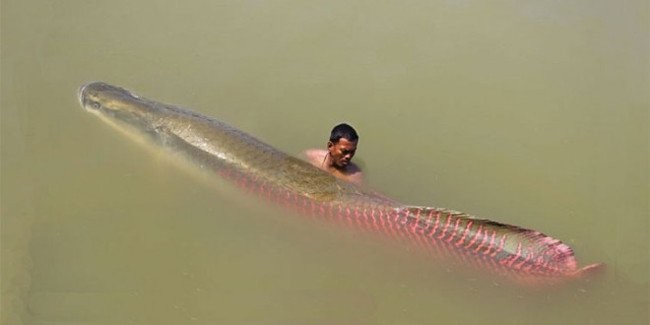
Young Arapaima have silvery gray scales, a round and elongated body, and their head resembles a pike’s head. Adult arapaima are a darker gray-brown with a metallic sheen. The scales on their dorsal, caudal, and anal fins have red or orange spots, making them even more noticeable.
Arapaima can survive during the dry season or in hypoxic conditions in flooded areas of the Amazon by burying itself in the muddy sand of the swamp and breathing through its mouth. However, this air breathing activity needs to happen every 5 to 15 minutes.
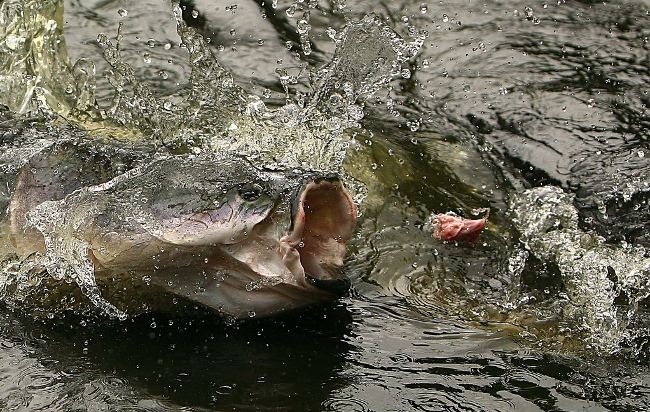
Another notable feature of Arapaima is its ability to breathe by swallowing air from the water’s surface.
Their daily diet includes fish, crustaceans and small creatures near the shore. However, occasionally Arapaima shows off its strength by jumping several meters out of the water to catch prey such as snakes or birds.
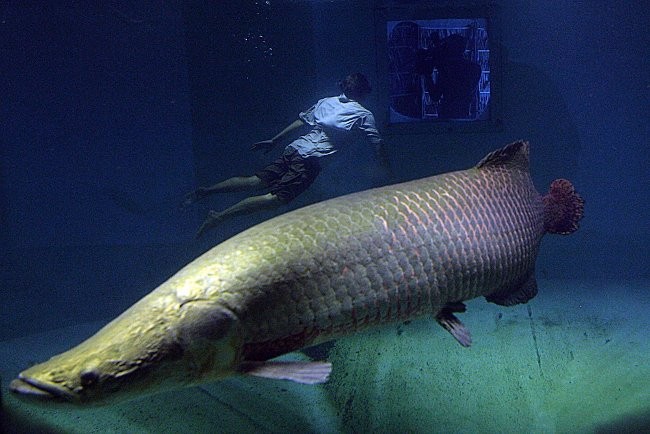
Pirarucu possesses sharp teeth to tear apart its prey. As a result, many consider it the top predator among fish in the Amazon.
Similar to other fish species, Arapaima has a unique reproductive behavior. After the female lays her eggs in the nest, the male fertilizes them and holds them in his mouth for the first four months. When the rainy season begins in May, the water level in ponds and lakes rises, baby fish hatch and begin life in a flooded environment.
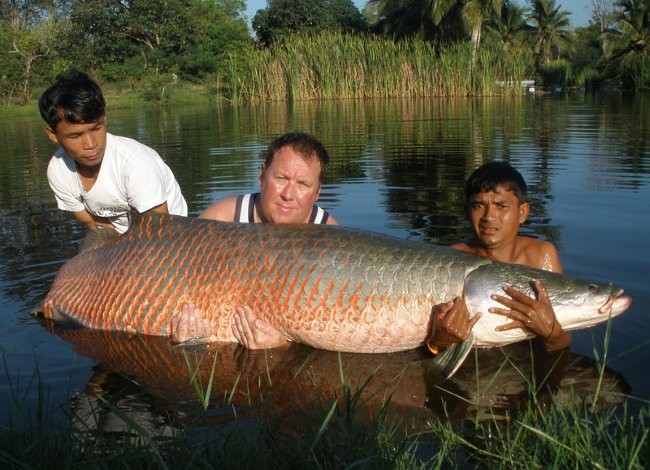
During this time, the parents control their young by secreting a pheromone that attracts and keeps the young close, ensuring they do not get lost.
Despite its huge size, Arapaima fish are very popular as ornamental fish thanks to their beautiful shape and eye-catching colors. South American residents often choose to keep them as ornamental fish. Furthermore, people in Southeast Asian countries, especially Thailand, also love raising this fish.
Due to its use as a food source and its reputation as a delicacy in South America, Arapaima fish face intense hunting and are in danger.
In addition to providing delicious, sweet meat for consumption, Arapaima’s tongue is surprisingly an essential ingredient.





